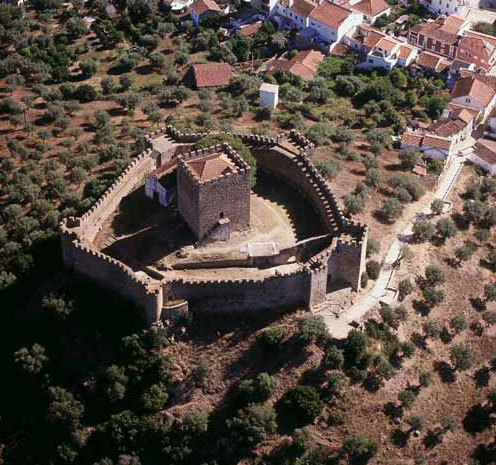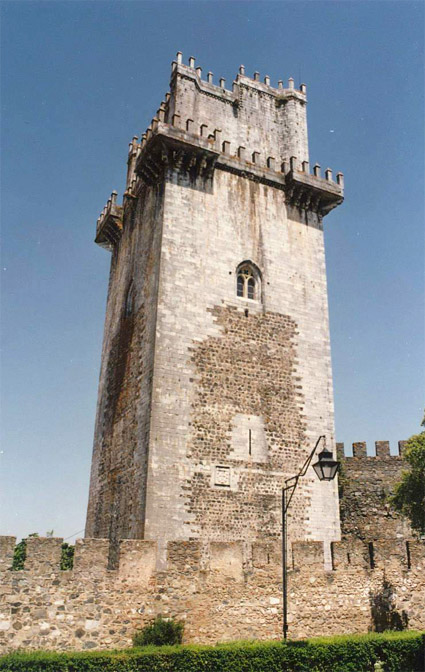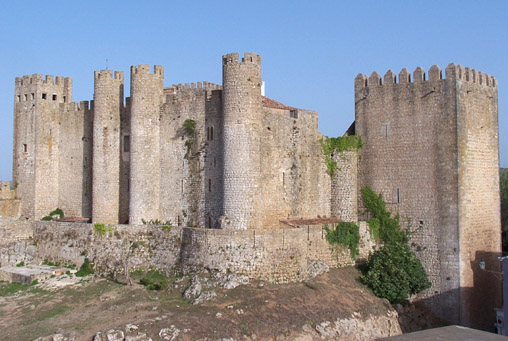




Index
| Castles and Palaces - 2 | |||||||||||||||||||||||||||||||
| Another castle located along the Tagus is found in Belver, built by the Order of the Knights Hospitallers on a hill overlooking the river. The castle was built between 1194 and 1210 and is very well preserved. The access to the elevated door of the keep was done with a mobile staircase, which could be removed in case the castle was taken. The location on top of a rocky hill helped in its defence. | |||||||||||||||||||||||||||||||
 |
|||||||||||||||||||||||||||||||
 |
|||||||||||||||||||||||||||||||
| In the 14th and 15th centuries, defences became more sophysticated following gothic trends, and Portuguese castles lost something of the crude appearance of romanesque times. The castle in the city of Beja (right) has a gigantic, 40 metre-high keep (the tallest in the Iberian Peninsula) built around 1310 and renovated in the following centuries. The tower is crowned with prismatic merlons and has a parapet supported by corbels around the third floor that allowed for the easy movement of defenders. The room on the second floor has gothic windows and the ceiling has a ribbed vault with decorated bosses. | |||||||||||||||||||||||||||||||
| In the Middle Ages, many Portuguese cities were surrounded by walls to protect its inhabitants in case of an attack. In recent times, most big cities torned down their walls, but many smaller towns have preserved their defences. One picturesque highlight is �bidos, located North of Lisbon, which has its whole system of walls and towers still intact. The village has an elongated shape with a castle on one side and the main entrance to the town on the other. | |||||||||||||||||||||||||||||||
 |
|||||||||||||||||||||||||||||||
| Left - Aereal view of �bidos. The village spreads over a small hill, with the castle (on the upper left corner) located on the higher elevation. The city walls were built in the 12th and 13th centuries. | |||||||||||||||||||||||||||||||
 |
|||||||||||||||||||||||||||||||
| Right - Castle of �bidos. The photo illustrates two defensive aspects that were incorporated in Portugal in Gothic times. First, round towers became widespread due to their requiring less building material and being more resistant to ballistic projectiles, which tend to ricochet on round walls. Second, lower walls were built around the main walls of many castles, especially around the entrance, to provide a first line of defence and prevent war machines (like mobile wooden towers) from approaching the main walls of the castle. These flanking, lower walls are called barbicans. | |||||||||||||||||||||||||||||||
 |
|||||||||||||||||||||||||||||||
| Left - Courtyard of �bidos Castle. In the early 16th century the residence of the Governor of the Castle was built in Manueline style, as evidenced by the elegant, bipartite windows and portal with the coats-of-arms of the Governor. The residence is nowadays a luxury hotel. | |||||||||||||||||||||||||||||||
| Page 3 Index |
|||||||||||||||||||||||||||||||